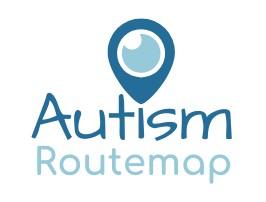Top athletes use this strategy to reach their goals

He took his place on the starter block - focus and determination framed his features. With nine gold Olympic medals in the bag, Michael Phelps, was hoping for another. The starter signal sounded and he plunged into the pool, legs and arms working together in powerful unison.
The crowds roared as the swimmers battled it out, jostling for position. In the final 50 metres, Michael took the lead. To the spectators, all looked well. But in the water, a different story was unfolding ...
What no-one knew, was that Michael was swimming blindly. His goggles had started filling with water the moment he entered the pool.
By the last leg of the race, Michael had no idea where his competitors were. He drew deeply on his inner world, imagining the race as he had done countless times before. He finished, not just in first place with yet another gold medal … but with a new world record to his name!
It wasn’t hope or chance that took Michael to the finish line at record speed. He had a formidable strategy …. visualisation. Like many world class athletes, Phelps used mental rehearsal to enhance his performance. In his training, he pictured every tiny detail and saw himself winning. He practised it in his mind until it felt real. That strong vision carried him through to victory when his situation could so easily have derailed him.
Having a vision for your future is a powerful way of positioning yourself for change and growth. Change is not easy. If you’ve ever tried to revamp your diet or exercise habits, then you know how your mind and body revolt when you impose a new approach.
One of the biggest challenges of implementing change is the battle between the new thinking or behaviours and the old system of beliefs. It becomes a tug of war almost always won by the stronger party – your underlying beliefs.
Your beliefs provide a framework for understanding the world. As new information comes in, your brain will try to fit this information into the existing containers. If it conflicts, it is likely to be rejected.
For change to become a possibility, the containers (beliefs) need to be modified. And that’s where vision comes in. Having a clear picture in your mind, which you revisit regularly, gradually builds a new belief and dismantles the old one.
Creating a vision for your future might include a vision board with pictures and words or a written statement. Choose what works best for you. Make it as detailed as possible.
When creating your vision, include your “why”. Knowing the reason why you want to do something helps for those moments when you get weary and want to throw in the towel.
Growing up in South Africa, I had many opportunities to go hiking in the mountains. Sometimes the path was easy and sometimes it was quite literally, an uphill climb. When I reached the point where my lungs and muscles were mounting a rebellion, one of the things that helped was to stop, admire the view and take stock of how far we had come. There is something very satisfying about looking at the path behind you and realising that you’ve made progress.
Recognising your improvement gives you a much-needed boost to carry on. Too often, we feel like we are not getting anywhere or we are too busy to notice. But stop, consider your vision and then look back to see how far you have come. Celebrate the wins you have made. And then, keep moving forwards.
To build a house, one must first plan. The architect conceives the vision which the builders and tradesmen put into action. Without that vision, the whole thing would be chaotic. Don’t treat your precious life differently – it deserves your time and attention on the drawing board!
To your future self!
Linda Philips
MSc. Human Communication
Autism Routemap supports autistic and neurodiverse people with coaching and training to improve communication, interaction, and emotional regulation skills. Interested in knowing how we can help?
Contact [email protected] or book a free Turning Point call here.

